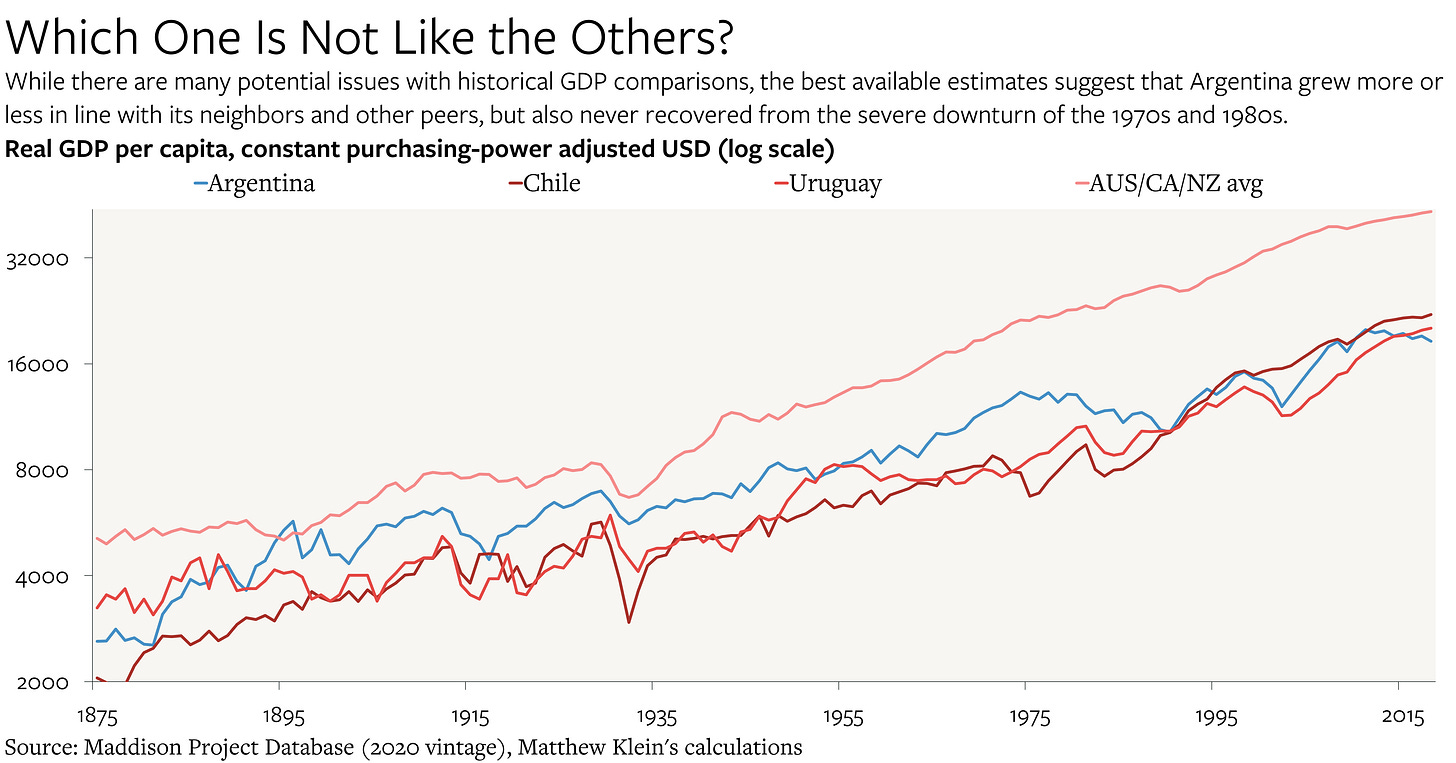A Longer-term Look at Argentina With Michael Pettis
In the latest episode of UN/BALANCED, we talk about Peronism, Latin American development vs. East Asia, and a positive net foreign asset position does not necessarily improve stability.
Earlier this week, I published a deep dive into the problems currently facing the Argentine economy.
A little bit earlier, I had the chance to chat with Michael Pettis about the longer-term situation in Argentina.
One of the classic questions in economic history is why Argentina—which shared many superficial similarities with Australia, Canada, and New Zealand in the late 19th century—ended up turning out so differently. We discuss this at some length, so I hope you have a listen, but I also thought it would be good to visualize this and put it into context.
It turns out that Argentina’s growth performance in terms of real GDP per person looks less unusual when compared to some of its immediate neighbors: Chile and Uruguay.1 At least, until the the 1970s. Moreover, the severe and sustained downturn of the 1970s and 1980s also seems to be the main explanation for why Argentina “fell behind” Australia, Canada, and New Zealand.
Comparing the levels of real output per person over time tells a similar story. Argentina went from being somewhat richer than its neighbors (and somewhat poorer than Australia/Canada/New Zealand) to having comparable incomes to its neighbors while being much poorer than Aus/Can/NZ.
As Michael says in the podcast, it is probably better to think of Argentina as what would have happened if the antebellum U.S. South had been its own country, rather than comparing it to a high-trust and relatively egalitarian agricultural superpower such as New Zealand.
Anyhow, I hope you have a listen! We talk about this—and a lot more. Remember that all paid subscribers to The Overshoot are eligible for a heavily-discounted subscription to UN/BALANCED. Look for the button near the top of this email.
There are a lot of potential issues with these data, some of which we discuss in the podcast, but these are the best cross-country estimates we have.




